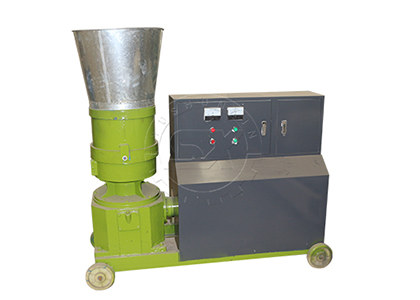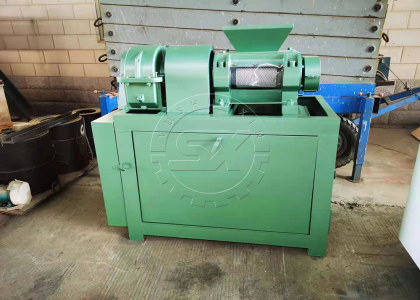Dry Granulation Machines
In the process of dry granulating, power can become a compact structure by external force in a limited space.
Meanwhile, it is suitable for low-moisture materials and it doesn’t change the physical state of materials.
This technology can be traced back to ancient times like making bricks or tiles.
What are the 2 Types of Dry Granulation Machines in Granulation?
Nowadays, there are mainly two types of dry granulation machines that can be used in making fertilizer, that is, flat die granulators and double roller press pelletizers. In the following paragraph, we will introduce you to the difference between this two fertilizer equipment.
Suitable Conditions for Dry Granulation
Before deciding to make pellets by way of dry granulation, you should figure out what kind of materials are suitable for them. Otherwise, it will be hard to form particles.
Generally, moisture-sensitive and temperature-sensitive materials are suitable for dry granulation.
For there is no need to add water or use a hot blast furnace to dry the finished pellets.
Apart from this, raw material selection is very flexible. In theory, you can use all dry powder materials, except for a few raw materials that are extremely costly(such as urea and heavy calcium).
Why Choose the Dry Granulation Method?
The advantages of dry granulation are as follows.
Problems You May Encounter During Dry Granulation Process
During the dry granulation process, you may encounter some problems and it may fail to make high-quality particles. Then, there’re some points you need to pay attention to before starting to make pellets.
Successful compression depends on the compatibility of the raw material. If the materials are not fully granulated, the roller may contain too many fines. Such conditions can contribute to coverage, cutting, weight, and hardness problems.
It is common to sift large amounts of fines in roller compaction and how well you can manage this depends on the nature of the raw material.
Since you need to use powder to make particles, the process may be heavily dusty. Therefore, be sure to choose a dry granulation machine that adheres to international requirements.
Whether you can make pellets or not depends on the moisture of your powder. For the moisture will influence its flowability. Mostly, moisture between 2% and 5% is appropriate. If the moisture is too low, particles are hard to form. If the moisture is too high, it tends to cling to the roller or form slugging.
How to Buy Fertilizer Machines for Dry Granulation?
It seems obvious that you must buy a dry granulator machine from a reputable manufacturer.
Then, what exactly should you know before buying a dry-type granulator?
Firstly, you must consider the technical parameters of a flat die granulator or a double roller press pelletizer. With this information, you can estimate what kind of model you need and estimate your capacity. Both two dry granulation machines are of low power than wet granulation. Thus, it can save you energy. Because the maximum power of our double roller extrusion granulator is 22kw and flat die granulator 45kw.
Secondly, you must consider the design of dry granulation machines. You can click the link to get a detailed description of a flat die granulator or a double roller press pelletizer.
Finally, you should choose a well-established manufacturer. In this way, the machines can last longer and you can be given a warranty. Similarly, if you have any questions you can find our professional sales manager who will solve your problem as possible as we can.



